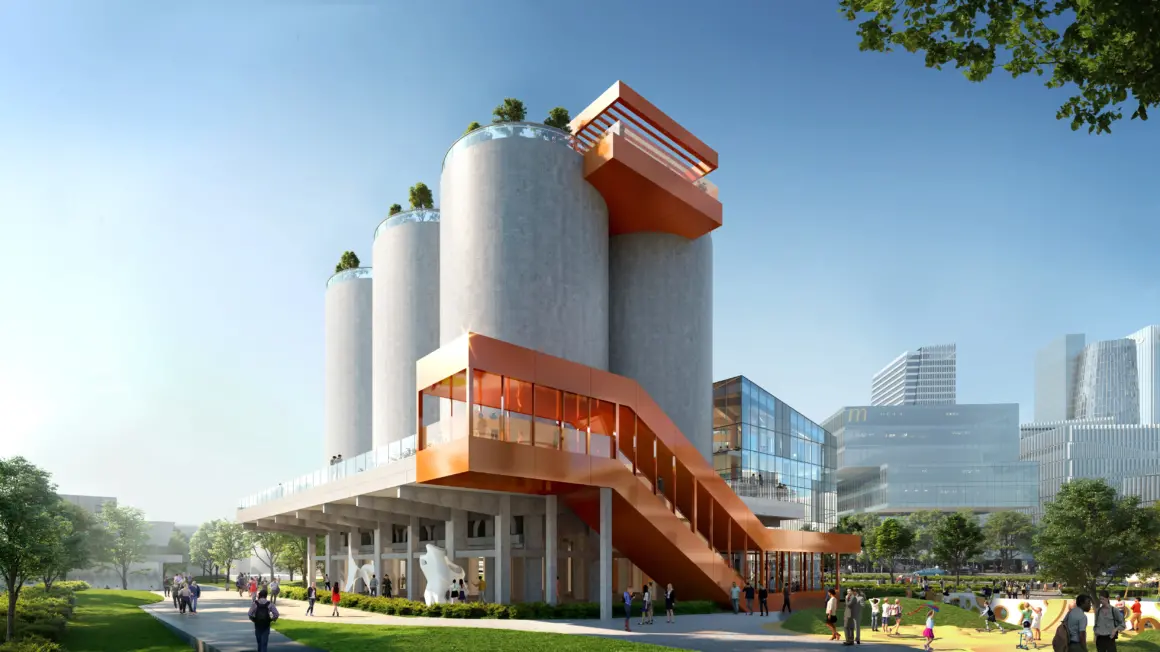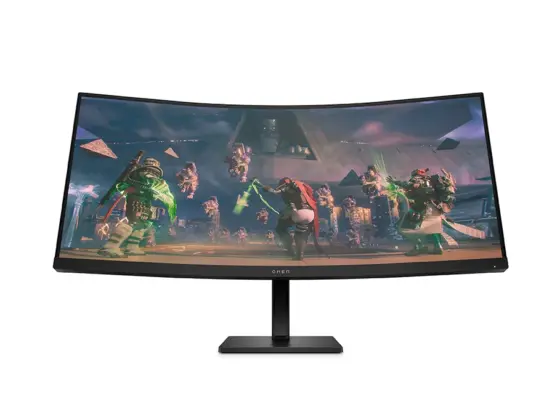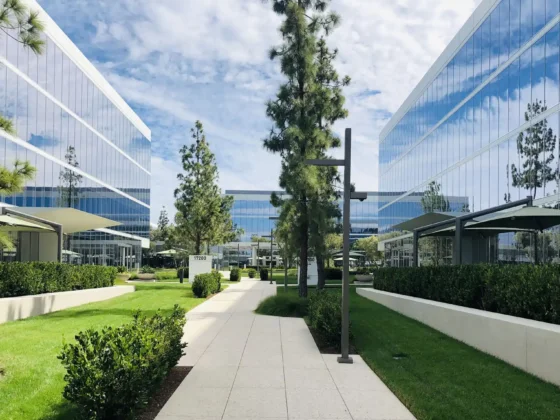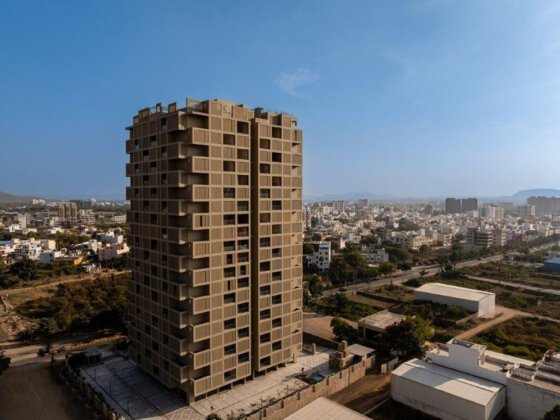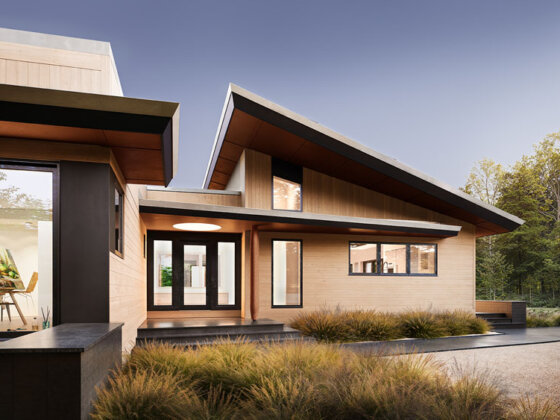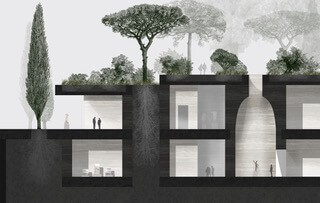Shanghai, China
Gate M West Bund Dream Center is the latest project by MVRDV and it is a riverside leisure and culture district in Shanghai.
Adapting a former industrial zone, this project will transform a collection of buildings with different styles and time periods, while minimizing carbon emissions by utilizing the existing structures.

Located to the south of Shanghai’s city center, the project continues an expanding string of cultural projects emerging near the river on Shanghai’s West Bund.
The site consists of two distinct types of buildings. Firstly, there are a few large industrial structures that serve as remnants of the area’s history as a cement factory. Secondly, there are several unfinished constructions from previous renovations scattered throughout the open space in between.

“It used to be that we only transformed culturally significant buildings from earlier time periods; here we transform not only 20th-century industrial heritage but even unfinished buildings from recent years. It goes to show how much value every city has in its existing structures that is ripe for designers to unlock” says MVRDV founding partner Jacob van Rijs.
With its design concept centered on the movement of people, expressed through a network of bright orange paths, stairs, ramps, and bridges, the design turns this patchwork of disused and incomplete buildings into a cohesive whole, generating a bustling and lively atmosphere on the banks of the Huangpu River.

MVRDV’s masterplan for the site retains all of these existing structures and takes a light-touch approach to renovate the more recent structures, saving as much of the existing materials as possible and minimizing the embodied carbon involved in transforming the site.
The older industrial buildings will receive a bold treatment, highlighting the industrial heritage and distinguishing between old and new.

Many of the industrial buildings will become cultural spaces, while hotels, restaurants, cafés, and retail will typically fill the newer structures.
Taking inspiration from the site’s history, movement was a key principle of the design – in the past, the area was organized around the movement of raw materials for cement production; in the future, it will enable the free movement of people with just as much efficiency.
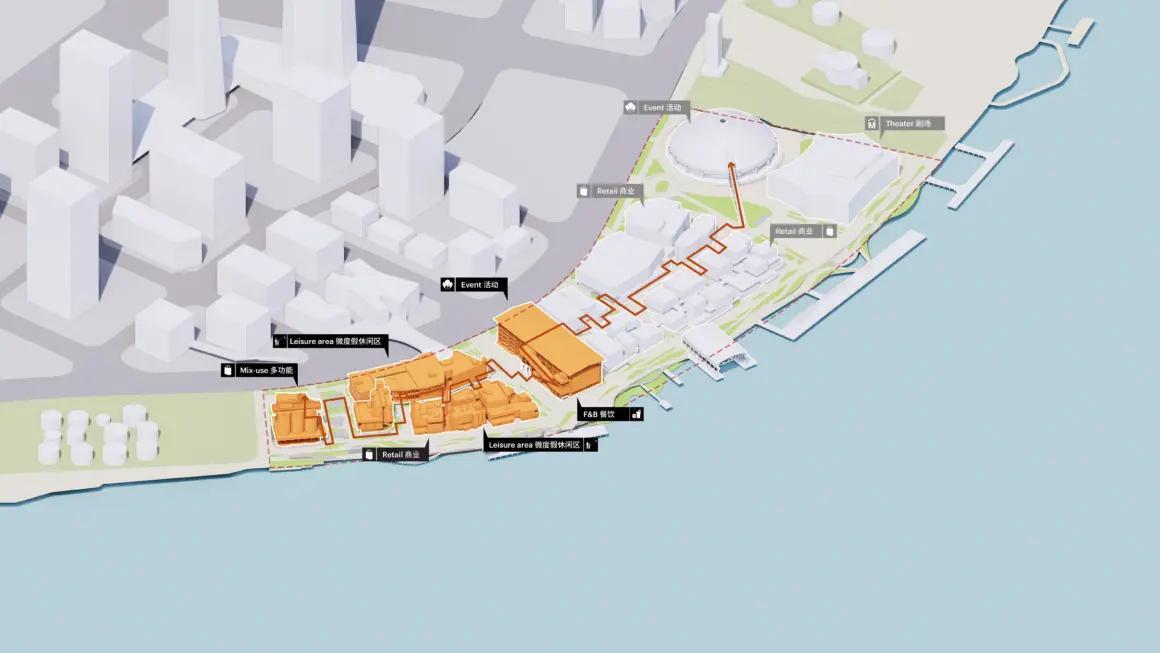
The site is organized around key axes that form the primary public areas, with landscape designs provided by James Corner Field Operations.
The most important of these axes is a central spine forming the main route from one end of the site to the other. The masterplan’s defining element, however, comes in how it uses different levels, with activated rooftops, a series of elevated terraces by the riverbank, and a network of staircases and elevators creating a three-dimensional promenade that permeates the site with its eye-catching orange color.
The lobby of The Dream Center Hall forms a part of the master plan’s central spine, cutting through the building from one side to the other.
In addition to the internal staircases, one of the design’s most striking features is the external staircase, finished in orange cladding and orange-tinted glass, which rises along one side of the building.

Project: Shanghai Gate M West Bund Dream Center
Architect: MVRDV
Founding Partner in charge: Jacob van Rijs
Partner: Wenchian Shi
Design Team: Kyo Suk Lee, Peter Chang, Sredej Bunnag, Luca Xu, Shanshan Wu, Yunxi Guo, Albert Parfonov, Amanda Galiana Ortega, Americo Iannazzone, Dorota Kaczmarek, Echo Zhai, Edvan Ardianto, Haocheng Yang, Jiameng Li, Jiani You, Kevin Zhao, Kristina Knauf, Meng Yang, Ming Kong, Martin Chen, Sen Yang, Shushen Zhang, Siyi Pan, Steven Smit, Tanja Dubbelaar, Xiaoliang Yu, Yayun Liu, Yihong Chen, Evan O’Sullivan, and Peilu Chen
Client: Hua Zhi Men Capital
Visualisations: Antonio Luca Coco, Jaroslaw Jeda, Luca Piattelli, Marco Fabri, and Stefania Trozzi

